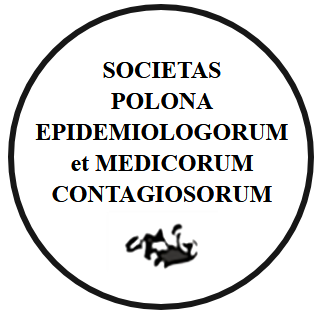RESEARCH PAPER
Blood infection of Capnocytophaga canimorsus etiology following a dog bite: case report
and review of the available literature
1
Studenckie Koło Naukowe Mikrobiologii Klinicznej, Uniwersytet Medyczny im. Piastów Śląskich we Wrocławiu, Polska
2
Pracownia Diagnostyki Mikrobiologicznej, Zespół Opieki Zdrowotnej w Oławie, Polska
3
Katedra i Zakład Mikrobiologii Uniwersytetu Medycznego we Wrocławiu, Uniwersytet Medyczny im. Piastów Śląskich we Wrocławiu, Polska
Submission date: 2024-04-28
Final revision date: 2024-07-11
Acceptance date: 2024-07-29
Online publication date: 2024-07-30
Publication date: 2024-09-18
Corresponding author
Zuzanna Beata Dąbrowska
Studenckie Koło Naukowe Mikrobiologii Klinicznej, Uniwersytet Medyczny im. Piastów Śląskich we Wrocławiu, Chałubińskiego 4, 50-368, Wrocław, Polska
Studenckie Koło Naukowe Mikrobiologii Klinicznej, Uniwersytet Medyczny im. Piastów Śląskich we Wrocławiu, Chałubińskiego 4, 50-368, Wrocław, Polska
Przegl Epidemiol 2024;78(2):167-176
KEYWORDS
TOPICS
ABSTRACT
We present the case of a 71-year-old man who developed sepsis caused by Capnocytophaga canimorsus as a result of being bitten by his own dog. Positive blood cultures were obtained, but due to difficulties in determining the bacterial species, the patient was treated empirically with ceftriaxone and levofloxacin. After using the recommended empirical therapy, the patient's condition improved.
Capnocytophaga canimorsus is difficult to identify, among others, due to its long growth time and specific development conditions (capnophiles). These Gram-negative bacilli cause a number of diseases in humans, ranging from infections of the skin and subcutaneous tissue, through peritonitis, to sepsis. The portal of infection with these bacteria is most often a wound caused by an animal bite. Additional risk factors that increase the risk of developing a severe infection and even death include older age, concomitant chronic diseases, and immunosuppression.
Share
RELATED ARTICLE
We process personal data collected when visiting the website. The function of obtaining information about users and their behavior is carried out by voluntarily entered information in forms and saving cookies in end devices. Data, including cookies, are used to provide services, improve the user experience and to analyze the traffic in accordance with the Privacy policy. Data are also collected and processed by Google Analytics tool (more).
You can change cookies settings in your browser. Restricted use of cookies in the browser configuration may affect some functionalities of the website.
You can change cookies settings in your browser. Restricted use of cookies in the browser configuration may affect some functionalities of the website.





